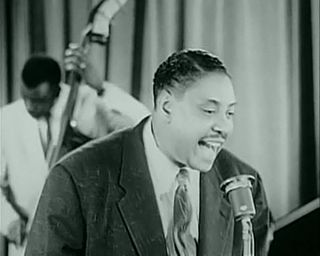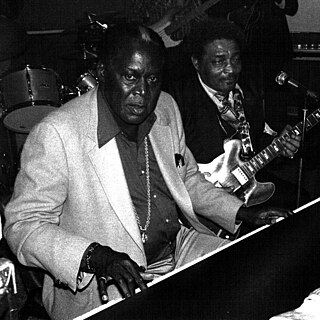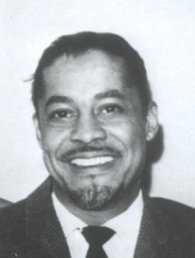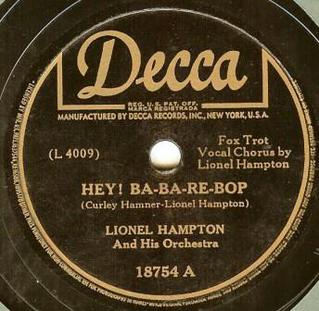Related Research Articles

John Lee Hooker was an American blues singer, songwriter, and guitarist. The son of a sharecropper, he rose to prominence performing an electric guitar-style adaptation of Delta blues that he developed in Detroit. Hooker often incorporated other elements, including talking blues and early North Mississippi hill country blues. He developed his own driving-rhythm boogie style, distinct from the 1930s–1940s piano-derived boogie-woogie. Hooker was ranked 35 in Rolling Stone's 2015 list of 100 greatest guitarists, and has been cited as one of the greatest male blues vocalists of all time.

Rhythm and blues, frequently abbreviated as R&B or R'n'B, is a genre of popular music that originated within the African-American community in the 1940s. The term was originally used by record companies to describe recordings marketed predominantly to African Americans, at a time when "rocking, jazz based music ... [with a] heavy, insistent beat" was starting to become more popular. In the commercial rhythm and blues music typical of the 1950s through the 1970s, the bands usually consisted of a piano, one or two guitars, bass, drums, one or more saxophones, and sometimes background vocalists. R&B lyrical themes often encapsulate the African-American history and experience of pain and the quest for freedom and joy, as well as triumphs and failures in terms of societal racism, oppression, relationships, economics, and aspirations.

John Len Chatman, known professionally as Memphis Slim, was an American blues pianist, singer, and composer. He led a series of bands that, reflecting the popular appeal of jump blues, included saxophones, bass, drums, and piano. A song he first cut in 1947, "Every Day I Have the Blues", has become a blues standard, recorded by many other artists. He made over 500 recordings.

Pictures at an Exhibition is a live album by English progressive rock band Emerson, Lake & Palmer, released in November 1971 on Island Records. It features the group's rock adaptation of Pictures at an Exhibition, the piano suite by Modest Mussorgsky, performed at Newcastle City Hall on 26 March 1971.

Joseph Amos Milburn was an American R&B singer and pianist, popular in the 1940s and 1950s. One commentator noted, "Milburn excelled at good-natured, upbeat romps about booze and partying, imbued with a vibrant sense of humour and double entendre, as well as vivid, down-home imagery in his lyrics."
The Hollywood Argyles were an American musical ensemble, assembled for studio recordings by the producer and songwriter Kim Fowley and his friend and fellow musician Gary S. Paxton. They had a US number one hit record, "Alley Oop", in 1960.

Cecil Gant was an American blues singer, songwriter and pianist, whose recordings of both ballads and "fiery piano rockers" were successful in the mid- and late 1940s, and influenced the early development of rock and roll. His biggest hits were the 1944 ballad, "I Wonder," and “We’re Gonna Rock” (1950). Cecil Gant is considered the forefather of rock n roll due to his rocking style.
Huey Pierce "Piano" Smith was an American R&B pianist and session musician whose sound was influential in the development of rock and roll.
Ernest Lawrence Fields was an American trombonist, pianist, arranger and bandleader. He first became known for leading the Royal Entertainers, a territory band which was based in Tulsa, Oklahoma, and toured along a circuit stretching from Kansas City, Kansas, to Dallas, Texas, and eventually across the US and parts of Canada. Later, he led a band that recorded in Los Angeles.

Ernest Aaron Freeman was an American pianist, organist, bandleader, and arranger. He was responsible for arranging many successful rhythm and blues and pop records from the 1950s to the 1970s.

René Joseph Hall was an American guitarist and arranger. He was among the most important behind-the-scenes figures in early rock and roll, but his career spanned the period from the late 1920s to the late 1980s, and encompassed multiple musical styles.
"Nut Rocker" is an instrumental rock single recorded by American instrumental ensemble B. Bumble and the Stingers that reached number 23 in the U.S. Billboard Hot 100 in March 1962 and went to number 1 in the UK Singles Chart in May 1962. It is a version of the march from Tchaikovsky's 1892 ballet The Nutcracker.
Albert Hazan was an American pop-rock recording artist, songwriter, and record producer.
Leon René was an American music composer of pop, R&B and rock and roll songs and a record producer in the 1930s, 1940s, and 1950s. He sometimes used the songwriting pseudonym Jimmy Thomas or Jimmie Thomas. He also established several record labels.

Rendezvous Records was an American record label, established in 1958 in Los Angeles, California. Its biggest successes were "In the Mood" with Ernie Fields along with "Bumble Boogie" (#21) and "Nut Rocker" (#23) recorded by members of its house band going under the name B. Bumble and the Stingers.
Maxfield Doyle Crook was an American musician, a pioneer of electronic music in pop. He was the featured soloist on Del Shannon's 1961 hit "Runaway", which he co-wrote and on which he played his own invention, the Musitron. He also recorded as Maximilian.

"Hey! Ba-Ba-Re-Bop" is a 1946 song by Lionel Hampton and His Orchestra. The song's lead vocals were performed by Lionel Hampton himself and the recording featured Herbie Fields on alto sax. The song went to number one on the R&B Juke Box chart for sixteen non-consecutive weeks and reached number nine on the national pop charts.
George Rodrick Jackson was an American rockabilly and rock and roll singer, songwriter, pianist and saxophonist, who recorded for Specialty Records in the 1950s.
"Asia Minor" is a 1961 instrumental recording by Jimmy Wisner. It is a rock and roll adaptation of Edvard Grieg's "Piano Concerto in A Minor", using shellac on the hammers of a cheap piano so as to induce a honky-tonk sound. He was turned down by 10 labels and had to release the track on his own label Future Records. The song became a hit, reaching No. 8 on the Billboard Hot 100 and No. 35 on the UK Singles Chart, despite having been banned by the BBC, which at the time refused airplay for music found to violate various standards, including pieces deemed to "[distort] melody, harmony and rhythm".
References
- 1 2 3 Roberts, David (2006). British Hit Singles & Albums (19th ed.). London: Guinness World Records Limited. p. 37. ISBN 1-904994-10-5.
- 1 2 "Obituary of R. C. Gamble, Jr". Archived from the original on 2008-08-08. Retrieved 2008-08-08.
- 1 2 3 4 "B. BUMBLE AND THE STINGERS". Rockabillyeurope.com. Archived from the original on 6 March 2019. Retrieved 12 March 2019.
- 1 2 Archived September 27, 2007, at the Wayback Machine
- ↑ Epinions.Com - A Little Bit Of Big-Band, Boogie-Woogie, Classical, Jazz, Pop, R&B & Rock - Ernie Freeman Archived 2012-02-14 at the Wayback Machine
- 1 2 3 "Nut Rocker". Spectropop.com. Retrieved 12 March 2019.